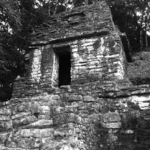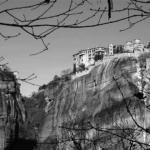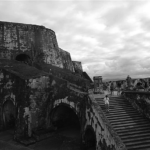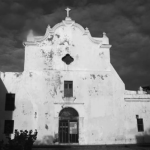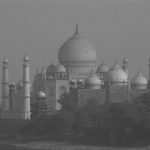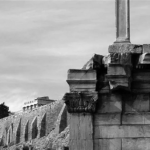Climate Change & Monuments
Having analyzed the effects in other areas of life and society, we will now move on to the specific subject of the climate change effect in the deterioration of monuments.
There are several factors which are directly responsible for the deterioration of heritage monuments, some of which are related to the changing environment. A small change in temperature directly results in a change in RH (relative humidity). RH and temperature are extremely important when it comes to the deterioration of stone and ceramic artefacts -which contain salts- since a slight change may result in salts crystallizing, and hence weathering occurs. Biological activity also changes; it may increase or decrease, hence changing the rate of deterioration; the biological film may then change completely, changing a monument’s aesthetic qualities and especially its colour (black, green, yellow etc.).
Increased temperatures result in increased dryness, causing droughts and possibly fires, which can be especially destructive for organic materials and several non-organic ones. Snow and ice also begin to melt hence material which was preserved within it may be lost. As a result of snow melt, sea levels also increase, submerging and destroying sites close to the coastline.
The change of the average temperature may bring cold areas located in high altitudes or extreme latitudes into higher temperatures, which will then with the seasons oscillate more often between frost and thaw. This oscillation is destructive for all materials.
Finally, climate change can also create an unstable environment; hence environmental phenomena are expected to increase, such as earthquakes, storms and hurricanes, which may result in flooding and destruction of heritage sites, museums and artefacts. Such disasters can also affect the livelihoods of people and may result in increased vandalism and theft or damage of artefacts, due to terrorism and conflict.
To comprehend these factors we will in this section go through the threats for heritage, underlining which of those are augmenting due to climate change. We will then review the decay and deterioration factors that could be affected due to the different contemporary climate and will conclude with case studies from the world, and from our host country, Greece.







